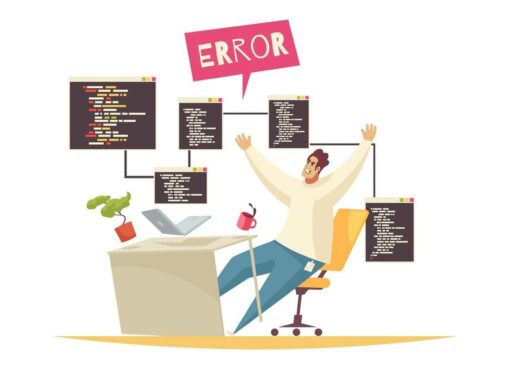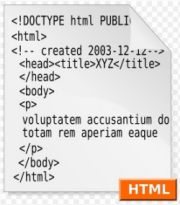Coding For Non-coders: How To Build A Website Without Prior Programming Knowledge

Websites are very important in today’s digital world. This is because they can help you share your ideas. They also help to grow businesses and connect with people. You do not need coding skills to build a website. Several tools have been made for people without technical knowledge. These tools are very simple and fun to use! Platforms like these have made it possible to create professional websites from scratch.
Selecting The Right Website-building Platform
Why A Website Builder Is Ideal For Non-coders
It is not easy to learn computer code for making a website; coding can be confusing sometimes. This is why website builders are a perfect solution. They use very easy drag-and-drop tools. This allows you to move elements like pictures and text blocks onto your website. A website builder does not require typing in code line by line.
You can make changes in designs with just a few clicks. This gives you full control. Not only do they save time. They also make website creation available to everyone, beginners and experts alike.
Popular Website-building Platforms For Beginners
- Wix is a platform that is good for creating websites. Wix allows users to use beautiful templates. You can also edit them to match your style easily.
- Squarespace is good for people who focus on design. Its templates are sleek and modern.
- WordPress.com WordPress is not only for bloggers. WordPress is also a great choice for businesses. It lets users try amazing plugins.
Key Factors To Consider When Choosing A Platform
To choose a platform, you must check its ease of use. Can you understand how it works? User-friendliness is very important. You should also check its features. It has to have options for customisation. This means you can change things to make your website unique. Pricing is another factor. Different platforms offer plans at different pricing points. Lastly, choose a builder that offers good customer support. Tutorials are helpful too.
Planning Your Website
Define The Purpose Of Your Website
What do you want your website to do? Think about your goal clearly. Is it a blog about travel or a business e-shop? Your purpose decides your website’s look.
This also helps you choose the right features. A business page needs sections for showing products. A blog needs better reading sections.
Map Out Your Website’s Structure
Start planning your website structure. You need to pick what information to show on different pages. A website should always have these pages: Home, About, Contact, Blog, and Services. Each page should be easy to find. Navigate means to move through pages. Plan it!
Preparing Your Content In Advance
A good website needs quality content. Write short and clear text. If it is too hard to read, users may leave. Also, prepare images, logos, or videos. A pretty website is more liked.
Step-by-step Guide To Building Your Website
Setting Up Your Account And Domain Name
You need an account first to use a platform like Wix. A domain name is like your home name on the internet; yourwebpage dot com is an example. Pick a name that users can remember. Link it with your website-building platform.
Choosing And Customising A Template
Every website builder gives choices of templates, but some people do not check the templates properly. Pick one that matches your goals. If you are a photographer, pick one with big image areas. You can now edit. Change colours, font sizes, or designs to match your branding.
Adding And Organising Content
Make sure all important information is available. Add your contact details for users to reach out. Divide sections properly. You can add blocks with videos or photos to make it interesting. Compress images to improve loading speed. Users hate a slow website.
Integrating Key Functionalities
You can add features like a form for people to message you. Many non-coders skip adding newsletters. It keeps customers updated. Another good feature is live chat for instant communication! Always link your webpage to your social accounts.
Making Your Website Mobile-friendly
Many people visit websites from their phones. If the website does not work on small screens, it is frustrating to them. Ensure your website is fully mobile-optimised. Most website platforms help you preview the mobile version.
Previewing And Testing Your Website
Before you publish your website, check it, test it before others see it. Click every link to confirm it works. Test the mobile version again. Share a test link with family and friends. Their feedback is very useful.
Enhancing Your Website Without Programming Skills
Using Plugins And Add-ons
Plugins are special tools for adding extra options without coding. WordPress has great plugin options. For example, you can add plugins for showing the number of visitors. There are plugins for a distraction-free reading experience also.
Incorporating Seo Basics To Improve Visibility
SEO is something that helps your page rank higher in Google search. Sometimes visibility gets low. To do this, add keywords in titles and descriptions. Do not forget to write alt text for photos; this improves visibility.
Emphasising Design And User Experience
Plain-looking websites are hard for users to like. It is important to mix your fonts and colours stylishly yet clearly. Focus on load speed because nobody waits too long. Best websites load in a few seconds only!
Ongoing Maintenance And Updates
Importance Of Keeping Content Fresh And Up-to-date
A website should change often, repeating the same information a repetition many readers will find boring. Add fresh posts weekly. Update new products or visuals.
Monitoring Website Performance
Analytics tools can show you how users are finding your website. If a button has low clicks, try changing its design.
Updating Plugins Or Themes
Platforms update plugins often. Keep an eye out for these updates. Your website will avoid technical problems.



Leave a Comment